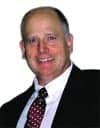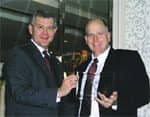
For the last 30 years, Interacoustics has supplied hearing testing equipment to audiologists all over the world. Handling United States distribution for the Assens, Denmark-headquartered corporation is its Minneapolis-based division. The autonomous unit is responsible for distributing and servicing all of the company’s products in the United States.
Interacoustics’ testing products include: screening audiometers, screening tympanometers, clinical audiometers, clinical impedance instruments and ABR, VNG, and oto-acoustic emissions equipment.
Interacoustics’ core clients are audiologists and ear, nose, and throat physicians. The US division handles national marketing, leaving its distributors to do marketing at the regional or local level—such as state conventions and regional trade shows. Sales to end users are made primarily by these specialized instrument dealers, and not by Interacoustics. “We have a variety of specialized instrument dealers, some are very large [companies] and some are very small,” says David Speidel, national sales manager. “But they are typically companies that have specialized in this industry for many, many years. Our responsibility, when we delineate this, is trying to handle all the larger trade shows. So any of the national shows like AAA, ADA, the AAO convention [are where we sell directly].”


The US division supports and services its products by training distributors and field service technicians. It also offers phone support. “As technology moves more into computers, there are a lot of support issues that I would call phone support issues,” says Speidel. “Our distributors, in many cases, aren’t as knowledgeable about the product as we are, so we end up fielding many questions from the end user when it comes to trouble-shooting or something of that nature with the software.”
But more than a worldwide distribution network and strong support network, what makes Interacoustics stand out is its commitment to research and development.
R & D Hamlet
Interacoustics’ 25-person research facility is located at the company headquarters in Denmark. Research is handled in two ways. Any developments involving the company’s core product line are handled, for the most part, wholly by the research and development department. New ideas and technology not pertaining to the core product line have involved partnering with other organizations, including Massachusetts Eye and Ear Infirmary and House Ear Institute. “There’s a variety of different products where research institutions will sometimes come up with an idea or a concept and they’ll experiment with it and then they need to take it to market somehow,” says Speidel. “They’re not in the business of doing the manufacturing and marketing. So they’ll come up with some type of idea or new technology to improve the methodology. But they’ll need somebody then to take it further, and they’ll partner up with a manufacturer [like Interacoustics] and we take it from there and try to get it to market.”
Typically, research and development follows a years-long timeline. But when a product is ready for market, it is beta tested by end users. It is during this beta-testing period that any glitches or problems with the new product are ironed out. “Often, end users and distributors will give us input as to how the product can be improved before we actually bring it to market,” says Speidel. “What we’re trying to do more and more, which in the past we weren’t so good at, is gathering that information before we actually finish the product. It’s more difficult to change the product after it’s completed than to make the changes in advance.”
When the product is finally ready for market, the company first trains its distributors on the technology, and then does a big rollout, coordinated with a trade show. “We feel that we get the most bang for our buck if we can time the marketing and the release of a product with those trade shows,” says Speidel.
The company has two new products in the works, a hearing aid testing system that will debut sometime later in 2004, and a new ABR infant screening system that should be ready for market next year, says Speidel.
Even with all the success the company has had over the last 30 years worldwide, it has yet to show a strong presence in the US market. That is something Speidel hopes to change. “We really haven’t entered into the US market strongly until within the last 3 years,” he says. “Throughout the rest of the world, when you say Interacoustics, it’s the most recognizable name in the industry. In fact, with our core product, it’s been said we’re the largest in the world.”
N. L. Shepherd is a contributing writer for Hearing Products Report.



